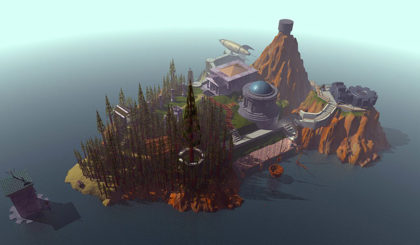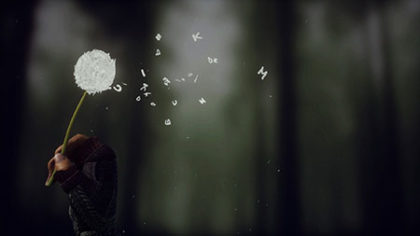By request of one of my friends, I was asked to play and analyze What Remains of Edith Finch, and the game was an interesting experience to say the least. This game is a difficult one to analyze, there’s honestly not much to analyze from a gameplay perspective, but this is my attempt to do so. It’s not going to be a very long analysis, but then again neither is the game.
(Warning: this analysis will contain MAJOR SPOILERS for the game. If you haven’t played the game, and don’t want the story ruined for you, then stop reading now!)
The Mechanics, or Lack Thereof
The first thing I usually talk about in an analysis of a game is its mechanics. What Remains of Edith Finch is what is often disparagingly called a “walking simulator”, but from a mechanical systems perspective, that’s pretty accurate. There’s not really any central gameplay mechanics, you walk through the world and interact with the environment to progress the story.
When you see a glowing icon, you click it, and an animation starts. Certain inputs will be considered “positive” and move the animation forward, and “negative” inputs will reverse the animation. It’s pretty simple, but it works well, and it’s very intuitive.
Of course, when you’re inside various “stories” the mechanics change for each one, and I thought these were all done very well. They were all intuitive, never needing to explain itself. This is helped by the possible inputs being very limited: you can move around your mouse, click, or use the movement keys. Whenever the controls change, you can quickly go through all of these and figure out the new controls very fast. There’s too many different control scheme changes in the game to go over them all, and I don’t think much would be gained by doing so, it’s enough to know that by limiting the inputs the player has, the developers made it very easy to figure out all the new ones they keep throwing at you.

Something that I appreciated in Edith Finch was that the game limits where you’re able to go in each section, in ways that never felt overly artificial. It would have been easy to make it so the player could backtrack to every place they had unlocked, and that would have slowed the game down a lot. While playing, I got lost a few times trying to find the next glowing prompt to move the story forward, and if I had been allowed to go too far off track it would have gotten very frustrating. I think in an earlier time, before game design was as advanced as it is today, that’s exactly what would have happened.
Limiting the space where the player can get lost is particularly important in Edith Finch because the game never gives the player a clear overall goal to guide them. Instead the player is just always looking for the next glowing icon to progress and then see what happens. The player isn’t moving towards an overall goal and when the ending happened, my reaction was “oh… I guess that was the end.” I didn’t know it was coming and I think that contributes to the general dissatisfaction with the ending that I see, but I’ll be going into the reaction to the ending more later.
Meaningful Interaction, Part 2
In my analysis of Persona 5, I heavily criticized the game for its lack of meaningful interaction for the first few hours of the game. Meaningful interaction refers to actions the player can take that actually have some impact to what’s happening in the game, and the player being presented with interesting choices.
What Remains of Edith Finch has literally no meaningful interaction in the entire game, but I’m okay with that. Whereas Persona 5 meant to have interesting choices, but just forgot to at the start, Edith Finch knows what its doing. It’s never meant to be a game full of dynamic choices, the game is just telling its story. Some people won’t like that, they’ll question why the game is a game at all and not a movie, and there’s validity to that viewpoint. My thoughts on the matter are that the story is enhanced by you being a part of it.
A Series of Unfortunately Interesting Events
The main draw of the game is various sequences that you play through as you live the lives of various Finch’s, and experience how they ultimately die. A lot of these sequences are really imaginative, I was really impressed by their creativity.
My favorites were Barbara’s comic book sequence, which was incredibly well done and endlessly creative, and Lewis’s imagination sequence, which tied his imaginative world and the mundane world together brilliantly. I liked how it subtly showed his imagination was taking over the mundane world as the imaginative world took over the screen. Lewis’s sequence particularly hit close to home for me, and I suspect would for most creative people.

I also really liked the sequences where you played as a child, they really captured the feeling of being a child. Calvin’s sequence, in the swing-set, captured the feeling of being on a swing, and I thought the techniques with the camera’s field of view and motion blur really made it immersive. Of course, every child tries to go all the way around in a swing, and I was no exception as a kid, but I always chickened out before getting too fast, so it was great to finally do it in a game! (Although it also confirmed all my childhood fears…)
The game does a great job of communicating what the individual stories are about through your actions in the game, and not just dialogue. Even with no text at all, you can understand that Calvin wants adventure, that Lewis is disconnected from his mundane real-world life, or that Gregory is a child that is full of a child’s wonder and imagination. I suspect this was an important goal for the developers, to represent each sequence’s theme through gameplay in ways that wouldn’t be possible in other mediums.
The Part Where Ian Talks About Art
Most games are “commercial”, they aren’t trying to “say something”, they’re just trying to be entertainment, but it’s safe to say What Remains of Edith Finch is an Art game with a capital “A”. If Halo is aiming to be the Hollywood blockbuster of video games, then What Remains of Edith Finch is aiming to be art house.
It’s strange then that I could never figure out what Edith Finch was trying to say. It certainly seemed to be trying to say something.
 Sometimes these sorts of artistic messages can become really ham-fisted, and when this happens people will roll their eyes at “artsy” works. A lot of creators don’t even believe that art should try to tell a message. I’m not going to judge one way or the other, but I do think that this game is trying to tell say something. I just never figured out what it was.
Sometimes these sorts of artistic messages can become really ham-fisted, and when this happens people will roll their eyes at “artsy” works. A lot of creators don’t even believe that art should try to tell a message. I’m not going to judge one way or the other, but I do think that this game is trying to tell say something. I just never figured out what it was.
After Walter’s story, I thought the theme was about how it was more important to truly “live”, even if it meant a shorter life. Many of the Finchs’ stories reinforced this: Calvin gets to fly like the astronaut he wanted to be, Barbara died surrounded by fame and adoration like she wanted. Walter avoided “living”, he hid himself away and thus extended his life for 30 years, but it wasn’t a real life. As soon as he decided to “live”, he died like the others, but was happy.
Unfortunately, a lot of stories contradict that interpretation. Edie seems to have “lived” the most of all of them, and she also lives to a ripe old age. Dawn never “lives”, hiding from doing any exciting and sealing up the interesting rooms, but dies all the same.
When I was playing the game, I was expecting the ending to wrap it all up and show me what the story had “been about” all along, but it didn’t. Edith just dies randomly like all the rest. A lot of people have expressed that they don’t like the ending, and I’ve seen various reasons commonly cited. Common complaints are that the ending is ambiguous, it doesn’t explain what actually happened to some of the family members, and it doesn’t explain if the curse is real or not. To me, those are non-issues, and I think the real reason the ending leaves people feeling unsatisfied is because the story never comes together at the end in a cohesive theme. At the end of it all, it was just a story about a bunch of people dying, and that’s pretty unsatisfying, I was expecting something more.
So… what is What Remains of Edith Finch actually about? The best I can come up with is that it’s about the fact that people die. Alternatively, maybe it’s about that people live interesting lives. Neither of those feel very satisfying to me, but when I look for more I don’t find anything.
Closing Thoughts
Maybe it’s fine I didn’t “get it”, maybe the game was never intended to be anything more than what it is: a series of interesting sequences, each with their own separate themes. In that regard, What Remains of Edith Finch succeeds. In fact, I think overall the best lesson we can take away from this game is that it does exactly what it sets out to do, no more and no less, and it is confident in itself. I enjoyed Edith Finch, it made me experience interesting moments. I wasn’t over the moon for it, but I respect it, and I admire that the game industry is now at a place where we can have games like it exist and be well received.
